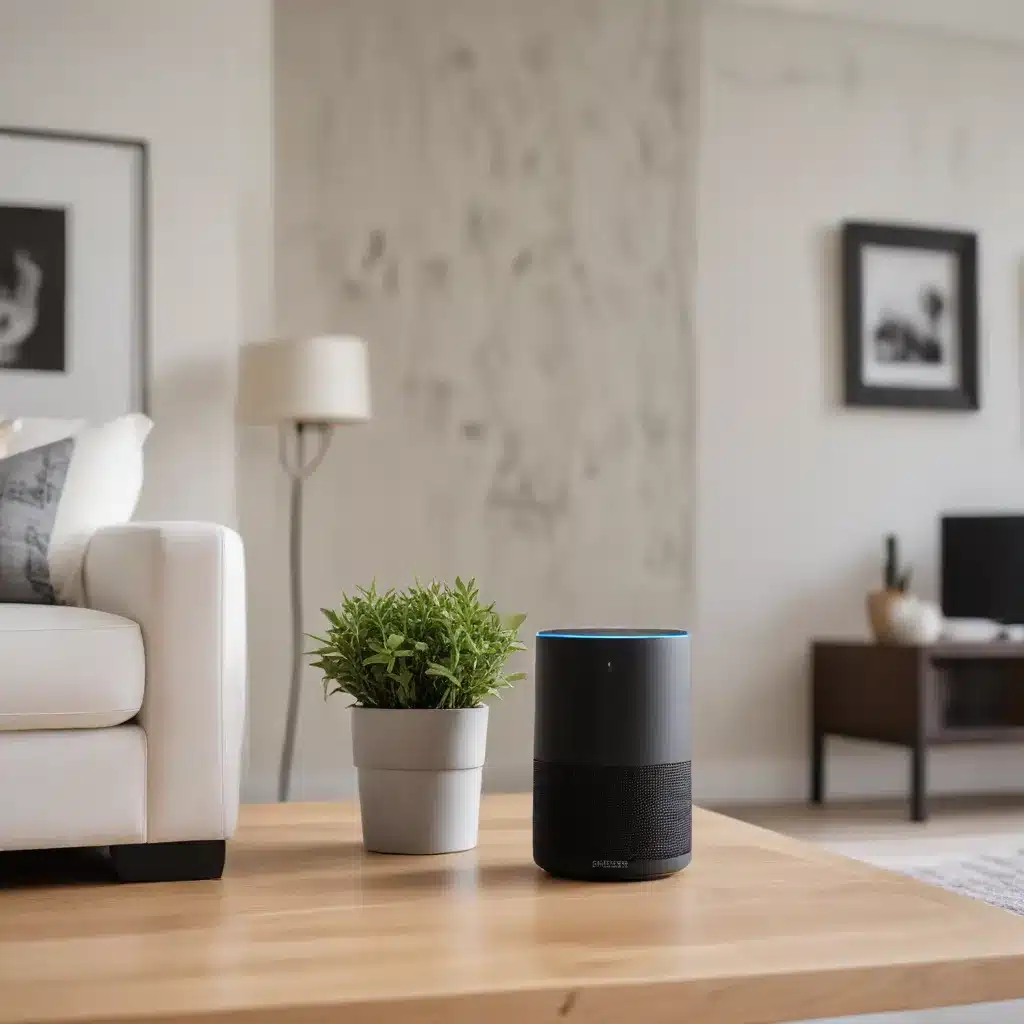
The Rise of Voice-Controlled Smart Homes
As the world becomes increasingly interconnected, the demand for convenient and efficient home automation solutions has skyrocketed. One technology that has captured the imagination of homeowners and technology enthusiasts alike is the rise of intelligent home assistants. These voice-controlled devices have revolutionized the way we interact with our homes, allowing us to manage a wide range of smart home functions with the simple power of our voice.
The growth of smart speaker ownership has been staggering, with the number of US adults owning such devices predicted to reach 55% by 2022, according to TechCrunch. These voice-activated assistants have become an integral part of many people’s daily routines, with 72% of smart speaker owners using them daily, as per Google’s data.
Beyond Basic Voice Commands
The early days of voice control in the home were not without their challenges. Initial voice assistants often struggled with speech recognition, frequently misinterpreting commands or responding only to specific pre-programmed phrases. However, the technology has advanced rapidly, with more sophisticated microphones, enhanced speech recognition algorithms, and the ability to seamlessly integrate with a wide range of smart home devices.
Today’s voice-controlled home automation systems have moved far beyond simple on/off commands for lights and thermostats. With a single voice instruction, users can now orchestrate complex routines, such as “I’m home,” which can trigger a cascade of actions – turning on the foyer light, adjusting the thermostat, opening the living room shades, and starting a favorite music playlist. This level of integration and automation has made voice control an increasingly attractive option for homeowners seeking a hands-free, convenient way to manage their smart home.
Choosing the Right Voice Assistant Platform
When it comes to selecting a voice-controlled home automation solution, consumers are faced with a variety of options, each with its own strengths and weaknesses. The two most prominent platforms, Amazon Alexa and Google Assistant, have gained widespread adoption, but they come with concerns around data privacy and security.
Many homeowners, particularly those with a strong focus on privacy, are now considering alternative solutions that prioritize local control and data protection. One such platform is Home Assistant, an open-source home automation system that puts local control and privacy at the forefront. By running on a user’s own hardware, such as a Raspberry Pi or a local server, Home Assistant offers a level of control and customization that cloud-based solutions cannot match.
Another option worth considering is the Josh.ai platform, which is designed specifically for professional installation by certified integrators. This approach helps to ensure optimal performance, reliability, and security, addressing the privacy concerns often associated with mass-market voice assistants.
Designing a Voice-Controlled Smart Home
When embarking on the journey of building a voice-controlled smart home, it’s important to consider the following key factors:
1. Privacy and Security
Data privacy and security should be a top priority when selecting a voice assistant platform. Look for solutions that prioritize local processing and storage, limiting the amount of personal information that is transmitted to the cloud.
2. Microphone Placement and Room Acoustics
Proper placement of microphones is crucial for reliable voice recognition. Integrators who understand room acoustics can ensure the voice assistant system is optimized for the best performance.
3. Integrating with Existing Smart Home Devices
Seamless integration with a wide range of smart home devices is essential for a comprehensive and cohesive voice-controlled system. Research compatibility and consider solutions that offer broad support for popular smart home brands and protocols.
4. Customization and Automation
The ability to tailor voice commands and create personalized routines is key to unlocking the full potential of a voice-controlled smart home. Explore platforms that offer robust customization options and automation capabilities.
5. Ongoing Maintenance and Updates
As with any technology, regular software updates and maintenance are necessary to keep a voice-controlled smart home system functioning at its best. Look for platforms that provide reliable and frequent updates to address any issues or enhance features over time.
Leveraging Voice Assistants for Improved Well-Being
Beyond the convenience of hands-free home control, voice-activated intelligent personal assistants (VIPAs) can also play a significant role in addressing the growing challenge of social isolation, particularly among older adults. A study published in the Journal of the American Geriatrics Society found that VIPAs, such as Google Home, have the potential to provide physical, social, and cognitive stimulation for homebound individuals.
The research identified several key areas where VIPAs can be leveraged to improve the well-being of older adults, including:
- Companionship: VIPAs can serve as an interactive companion, engaging users in conversation, providing weather updates, and offering a sense of connection.
- Home Control: Voice-activated home automation features can help older adults maintain independence and control over their living environment.
- Education and Entertainment: VIPAs can provide access to a wealth of information, as well as entertainment options like music, audiobooks, and educational content.
- Reminders and Health Monitoring: VIPAs can be programmed to provide medication reminders, schedule appointments, and even monitor certain health metrics.
By leveraging the capabilities of VIPAs, caregivers and healthcare professionals can explore innovative ways to combat social isolation and improve the overall well-being of older adults.
Conclusion: Embracing the Voice-Controlled Smart Home Revolution
The rise of intelligent home assistants has ushered in a new era of voice-activated home control, offering homeowners unprecedented convenience, customization, and connectivity. As the technology continues to evolve, it’s essential to prioritize privacy, security, and seamless integration when designing a voice-controlled smart home.
By carefully considering the factors outlined in this article and exploring alternative solutions that prioritize local control and data protection, homeowners can harness the power of voice-activated home automation to enhance their daily lives, while also addressing the critical challenge of social isolation. The future of the smart home is undoubtedly voice-driven, and those who embrace this revolution will reap the rewards of a truly intelligent and responsive living environment.












